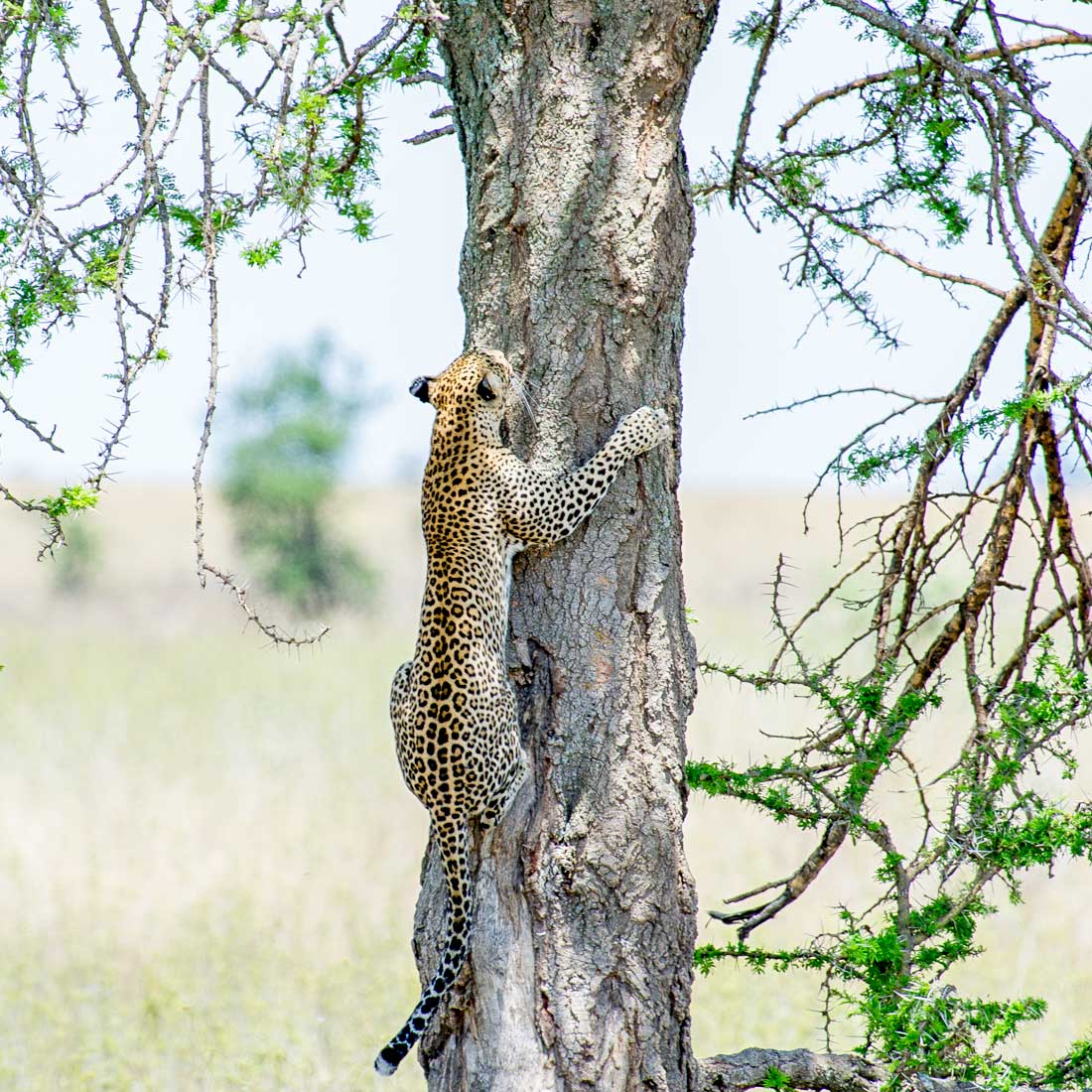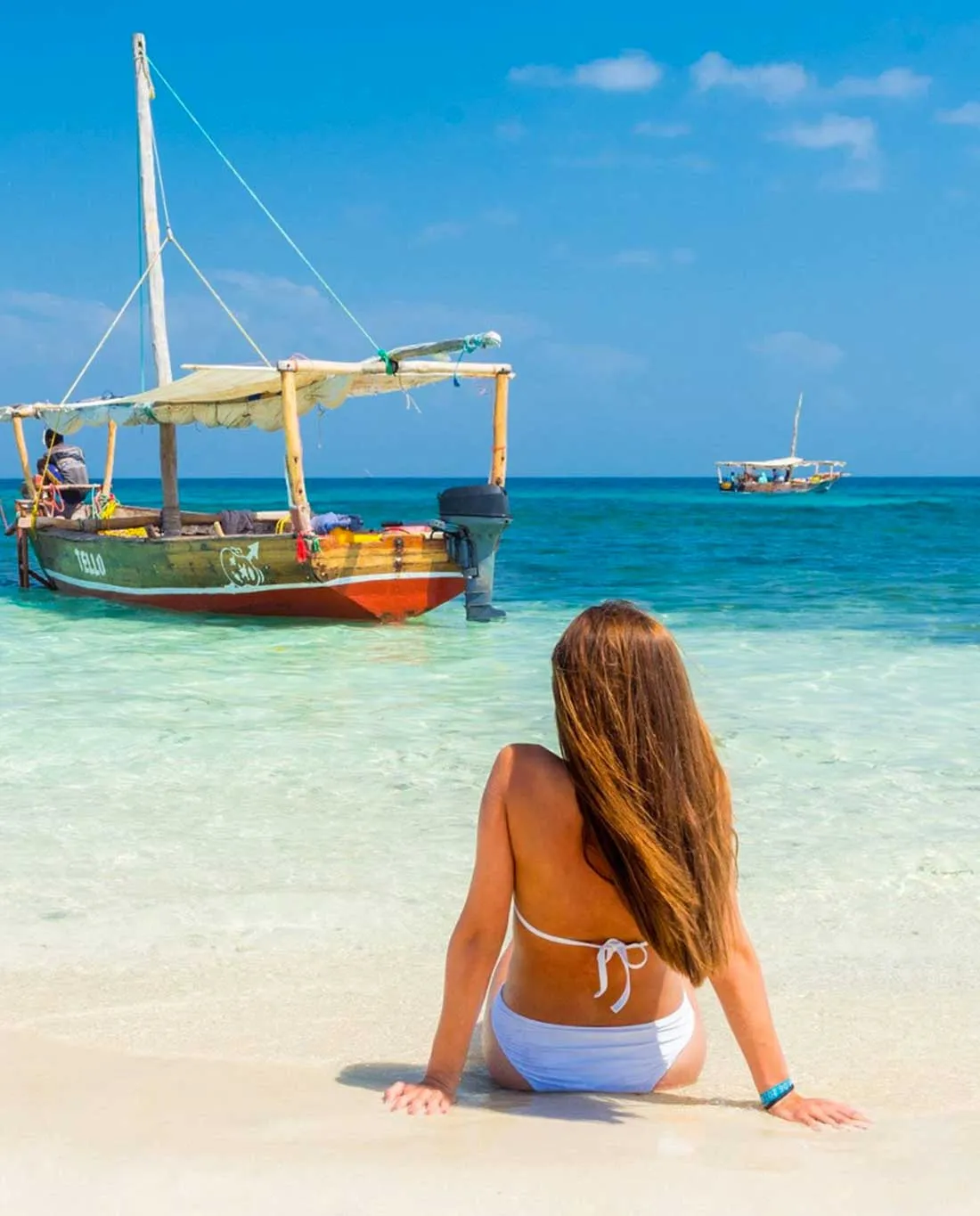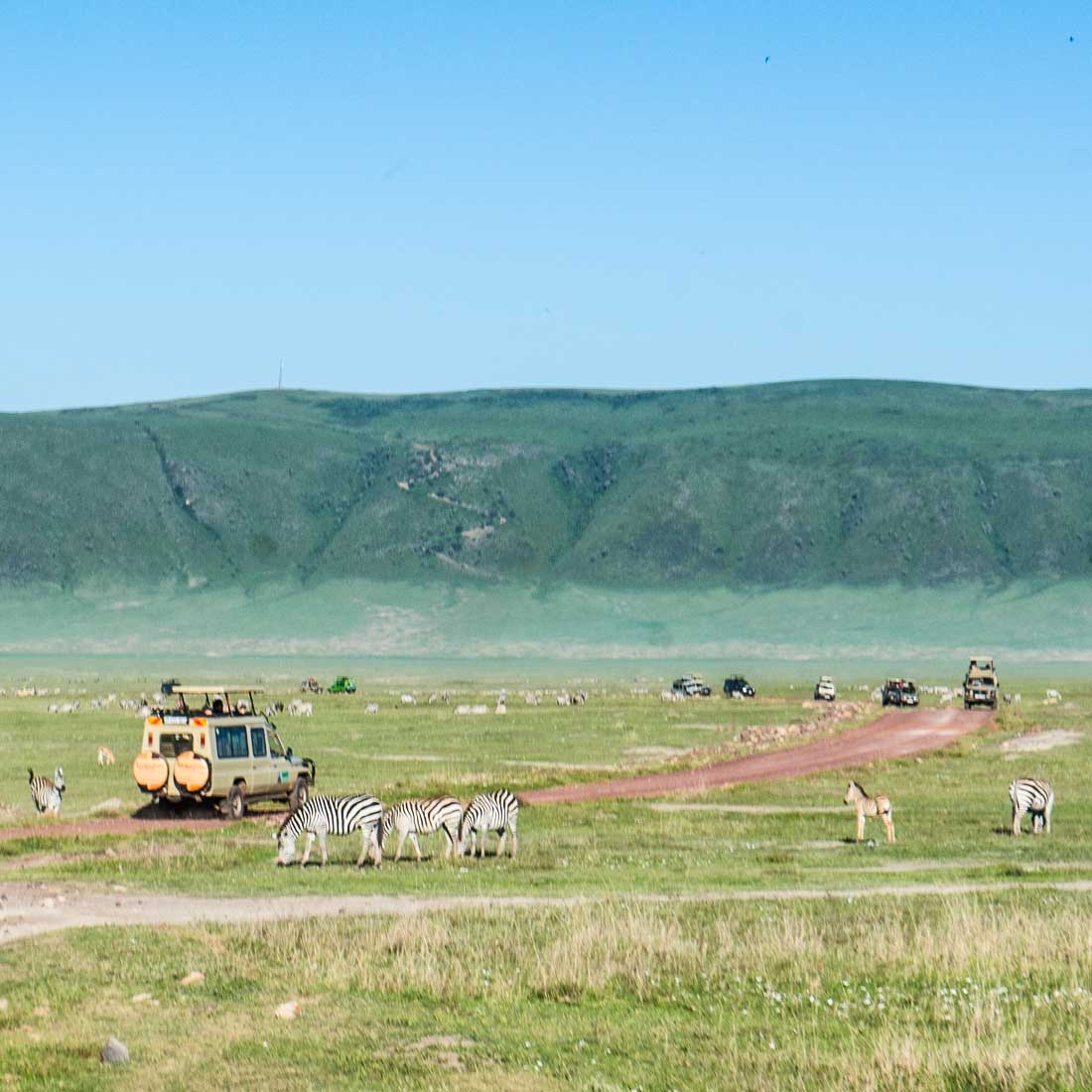-
Home
- Destinations
Location: Northern Circuit, Arusha Region
Area: 260 km²
Category: Conservation Area
Overview
The Ngorongoro Crater is one of Tanzania’s most iconic natural wonders and a UNESCO World Heritage Site. Formed approximately 2.5 million years ago by the collapse of a massive volcano, it is the largest intact and unfilled volcanic caldera in the world. Spanning 20 kilometers in diameter and plunging 600 meters deep, this breathtaking natural amphitheater supports an incredible diversity of life.
Often referred to as the “eighth wonder of the world,” Ngorongoro is home to over 25,000 animals, making it one of the best wildlife-viewing destinations in Africa. The combination of fertile volcanic soil, permanent water sources, and a range of habitats—including grasslands, swamps, forests, and Lake Magadi—makes it a haven for both grazers and predators year-round.
Despite its popularity and frequent safari traffic, the Crater offers unparalleled wildlife sightings, from black-maned lions to the rare and endangered black rhino. The high Crater rim rises over 2,200 meters and is often shrouded in mist, creating a dramatic atmosphere and cooler climate compared to the surrounding savannahs.
Highlights
-
Largest intact volcanic caldera on Earth
-
Over 25,000 resident animals including Big Five
-
Excellent year-round game viewing
-
Rare opportunity to spot wild black rhinos
-
Rich birdlife including flamingos at Lake Magadi
-
Spectacular scenery and varied habitats
Activities
-
Game Drives – Experience rich wildlife encounters with chances to see elephants, lions, hyenas, buffaloes, and more.
-
Bird Watching – Especially around Lake Magadi, home to flamingos, pelicans, and various raptors.
-
Walking & Hiking – Guided treks along the Crater rim offer stunning panoramic views.
-
Cultural Visits – Interact with the local Maasai communities who inhabit the Ngorongoro Conservation Area.
-
Romantic Escapes – Ideal for weddings, honeymoons, or luxury bush getaways.
Did You Know?
-
Meaning of Ngorongoro: Derived from the Maasai term “orgirra le kkorongorro” meaning “Big Bowl.”
-
Climate: Due to its elevation, nights on the rim can be cool—pack accordingly!
-
Geological Fact: The crater floor lies at about 1,800m above sea level and supports a self-contained ecosystem.
FAQs
When is the Best Time to Visit?
Ngorongoro can be visited year-round, but the dry season (June to October) is ideal for game viewing. The wet seasons (March–May and November) offer lush scenery and fewer tourists.
How Do I Get There?
Ngorongoro is easily accessible by road from Arusha (~3.5 hours) or via charter flights to nearby airstrips. It’s commonly visited as part of the Northern Circuit Safari route.
Nearby Parks & Attractions
-
Serengeti National Park
-
Lake Manyara National Park
-
Olduvai Gorge (famous paleoanthropological site)
-
Tarangire National Park
Are You Ready to Roam the Wild?
Start planning your Tanzanian wildlife safari today. Let African Giant Adventures guide you to the unforgettable.
Ready to embark on your next adventure?
Plan Your Trip With us
With years of experience in East African tourism, our guides are well-versed in local culture, wildlife, and hidden gems.
Trip & Holiday Itineraries
Design your own safari and beach itinerary: see examples from our experts for inspiration.
Tanzania Holiday Types
Honeymoons, family holidays, walking and cultural safari, diving, trekking… there's plenty to keep you busy.
Excursions & Safari Planning
Unsure or almost there: wherever you are in the process we will guide you to the right trip.



